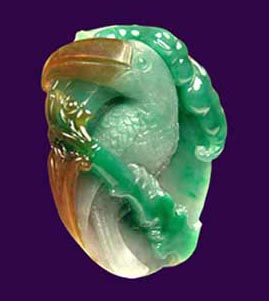Chinese folk art is an important part of the country's extremely rich cultural and art heritage. It is as extensive as any in the world. Each section of China had its own styles, and the entire output of art was enormous for both family and community use. The art associated with festivals, weddings, and funerals was extravagant even among the poor, and vestiges of it can still be seen in Chinese holiday celebrations.

Jadeware
The folk artist is at its best in understanding and depicting life in its wholeness, and apt to show its rhythms and melodies. It relies on its intuition, impressions and memories, as well as experience and understanding of life to grasp the essence of the phenomena or objects he depicts, thus making the artistic images quite different from their original models. In artistic representation and expression, works of folk art are straightforward, natural, flexible, free from affectedness, vivid and intimate.
Paperwas invented in China, and much folk art using paper was devoted to making shop signs and festival objects. The design and execution of wood-block prints has already been noted.

Ming Dynasty style furniture
The production of furniture provided some of the finest examples of Chinese folk art. Before the introduction of Buddhism from India in about the 1st century AD, the Chinese used little in the way of furniture, normally sitting on the floor cross-legged or on stools. Buddhism introduced a more formal kind of sitting on chairs with back rests, and with chairs came other types of furniture.
